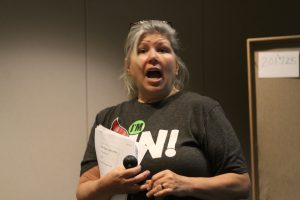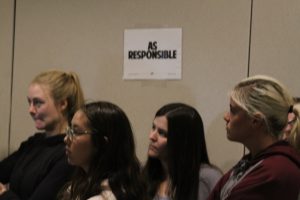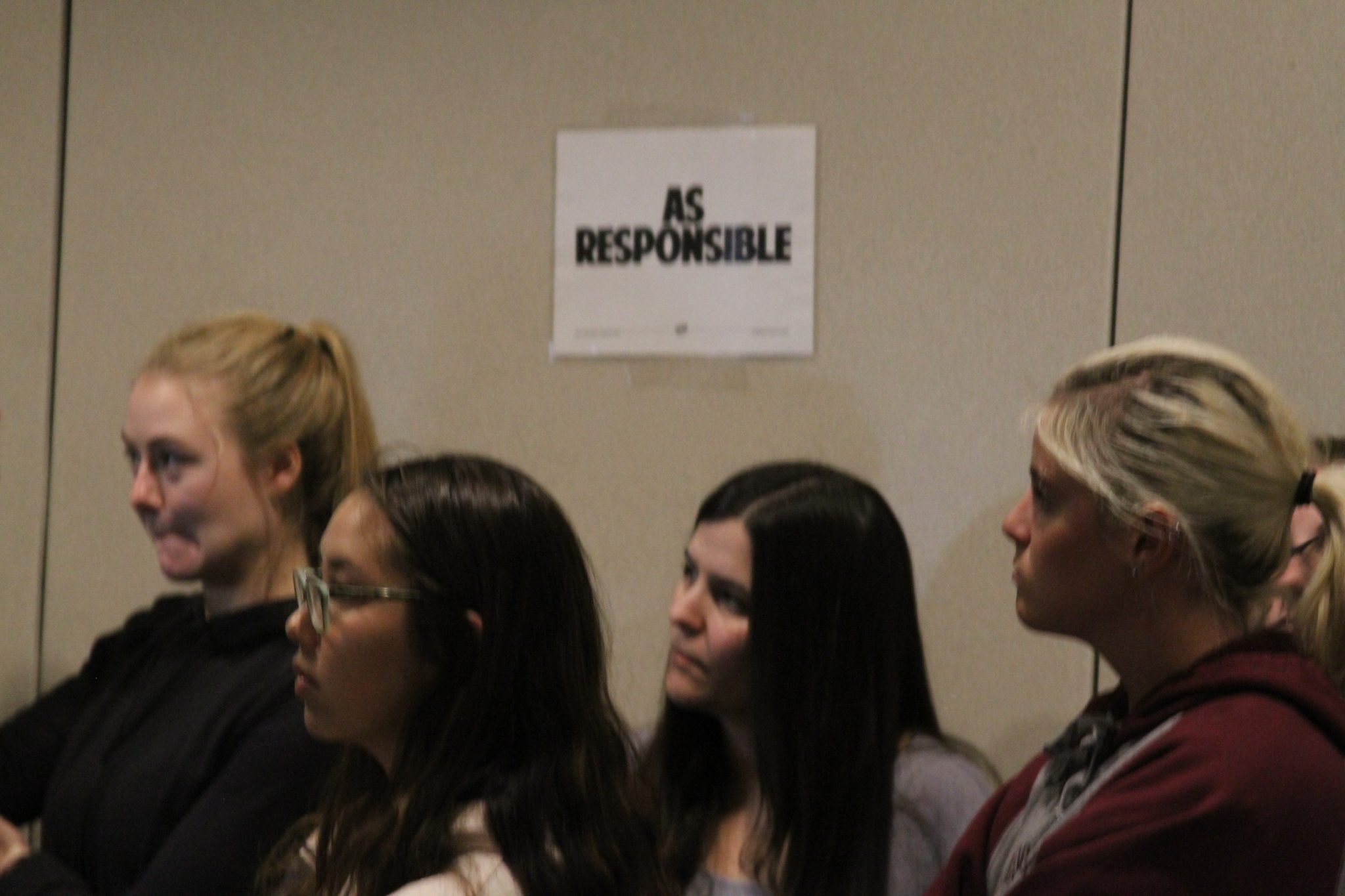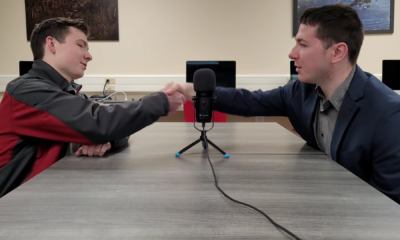Campus Life
Roll call for responsible bystanders
Members of the NIC community came together for a Green Dot training session at Best Western.
After a free lunch, they gathered to learn about bystander responsibility including numerous team building exercises.
With presentations and personal accounts from Amanda Krier, Gus Wessel, and Lynn Covey the room fell heavy during various times in the afternoon.

Lynn Covey explains the differences between passive and reactive bystanding. Photo by Quest Johnson-Luiz.
Executive Assistant of Student Services Lynn Covey opened up the Green Dot training program.
“Statistics tell us that power based violence happens all too often,” Covey said.
Covey shared the story of a family member who was in high school at the time. This family member attended a party with no adult supervision and underage drinking. After attempting to locate a place to rest, she was trapped and sexually assaulted.
“90% of sexual assault cases [locally] go unreported,” Gus Wessel, NIC school resource officer said. “During the last five years, 1628 domestic abuse reports resulted in an arrest or other actions,” he stated.
When Wessel asked if anyone in the room knew a victim of sexual assault, a majority of the attendees raised their hands.
There are certain barriers bystanders face when observing something unjust. The most common are as follows:
- diffusion of responsibility, or leaving it for someone else to take care of
- evaluation apprehension, or the fear of misinterpreting a situation and making a fool of oneself
- pluralistic ignorance, assuming, because no one else around is doing anything, they shouldn’t either

NIC resource officer Gus Wessel reads from papers written by past participants Green Dot training sharing how power-based violence has impacted their lives. Photo by Quest Johnson-Luiz.
Green Dot was created by Dorothy J. Edwards and her team in 2006. She has a Ph. D. in counseling psychology. Her team has devoted a large amount of research to make Green Dot a holistic and effective program for tackling power-based violence. Its adaptability makes it applicable to a wide variety of groups. From the air force to construction sites to schools, they tailored the training to be an essential element of prevention.
The Green Dot program aims to equip communities with the tools to overcome these barriers. Attendees are run through scenarios where they are asked if those involved, but not technically committing any crime, are as responsible, less responsible or not responsible, as the one committing the crime themselves.
For example: If someone walking down a dark alleyway sees someone being assaulted, and doesn’t do anything about it are they as responsible, less responsible or not responsible?
“You either do something or you don’t, and if you don’t, you’re making an active choice to leave somebody in harm’s way,” Covey said.
The philosophy behind Green Dot, expressed by the trainees, is a need for a shift in the culture surrounding the responsibility we all share of each other.

Participants were asked to stand in the appropriate area to represent their thoughts on scenarios involving bystander responsibility
“I think it’s really important to have athletes involved with Green Dot bystander training because at any campus, athletes have a large influence and they’re a large amount of the population so just getting the athletes through the door helps create a better community and a better atmosphere for change,” Jordan McCracken, assistant coach of the NIC softball team explains.
Sarah Williams, a softball player said, “I hope that if we’re all at a party or something, we’ll be more aware to look out for one another because . . . people be crazy.”
Social diffusion theory is the idea that behavioral change in a society can occur and be spread. If enough people with positions of leadership actively practice and advocate for the behavior. Playing off of this concept, Green Dot has customized their curriculum to fit into communities of all kinds. Our own Green Dot program focuses on the campus community and on athletes, or other leaders. Other specialized programs have been customized to protect people in construction trades from hazing, bullying and harassment. The program’s aim with younger groups such as those in high school is to acknowledge peer pressure, bullying and identity.
Green Dot describes the 3 best ways to put an end to power-based violence as the three Ds:
- Direct intervention involves confrontation during an occurrence of violence. Trainers warn us only to use this method if it is safe to do so.
- Delegation requires contacting authorities or checking with others in the area to make an action plan. For this, there are multiple ways to reach out such as NIC’s anonymous reporting system Secret Witness or calling campus security.
- Distractions can be a temporary way to remove someone from a high-stakes situation but may allow for things to escalate again
“In our organization, our idea is that if someone who is experiencing this kind of violence has had their choices taken away from them,” Kaila Harris, a Safe Passage advocate explains.
Safe Passage does three-day presentations in middle and high schools in the five northern counties to teach students about healthy relationships, dating abuse, and technology. Providing those students with the tools to recognize those unhealthy relationships, can, in turn preventing them.
Safe Passage also has responsive treatment for those who are victims of sexual assault.
















